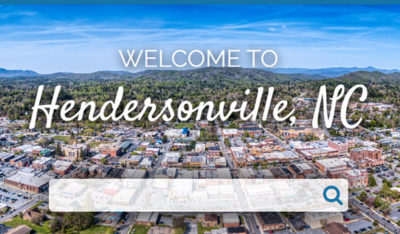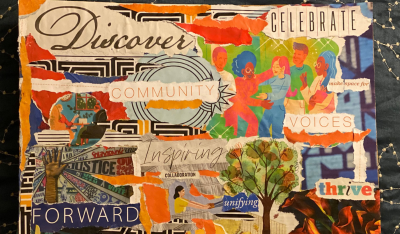
While every community is different, government organizations often run into the same initial hurdle: how to get the word out about an upcoming project.
Keep reading to see best practices for initial outreach and how public engagement software helps government organizations:
- Reach underrepresented groups
- Increase public awareness
- Lower the barrier to participation
- Keep resident input organized and manageable
How can I spread the word if there is no audience?
Government agencies can use a variety of methods for community engagement: email, text, paper collateral, public meetings, and social media – just to name a few. For agencies who have an existing database of residents, it is important to utilize a Community Relationship Management (CRM) software to re-engage residents who have participated before. The right CRM for government should be connected with communication channels like email, text, and social media. By capturing resident contact information, government organizations can close the feedback loop with project updates and additional rounds of input while building a resident database for future projects.
However, this database of resident contact information may not be a luxury that all local governments have. Previously collected information may have been lost due to replacing software, human error, or internal systems not complying with one another.
Whether you are rethinking your community engagement plan or just looking for best practices for your next project, here are four tips for getting the word out.
1. Target underserved populations with social media advertising & mapping
One challenge in increasing community engagement is reaching beyond the usual voices to underrepresented groups. One solution is targeted social media posts, which can focus on a desired location or demographic and translate into the native language of a resident.
As we’ve written about in a previous case study, GoTriangle in Raleigh leveraged Facebook targeting to instantly increase reach and participation in the Hispanic community. Government organizations also now instantly identify Environmental Justice groups with EPA tract-level data using Equity Mapping.
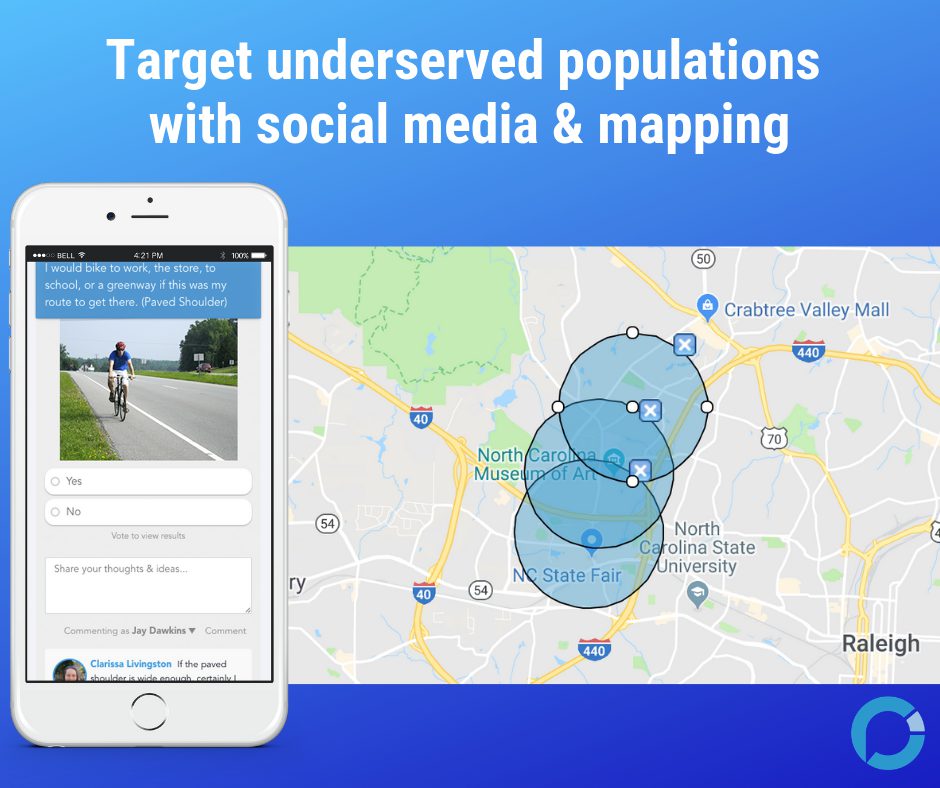
2. Partner up with local community groups
Community groups provide an instantaneous path to reaching and engaging underserved, Linguistically Isolated, and Environmental Justice communities, or specific interests. By building relationships with leaders of these community groups that already have social capital, public involvement coordinators and planners can quickly spread the word.
When working with community groups, you may want to track specific public outreach efforts and provide multi-lingual surveys that aggregate responses and comments automatically.
3. Provide multiple ways to have the same public engagement experience
Mobility is more important than ever: The Pew Research Center recently found that 95% of Americans own a cell phone and Forbes reported that cell phones are the most ubiquitous technology to engage both low-income populations and Millennials.
Sharing a link to a project page should mean that when someone arrives, it is mobile friendly and easy to participate. Likewise, providing multiple, redundant ways to engage like a phone line, email address, and/or text message allows residents to participate in the format they are most comfortable with and/or have access to.
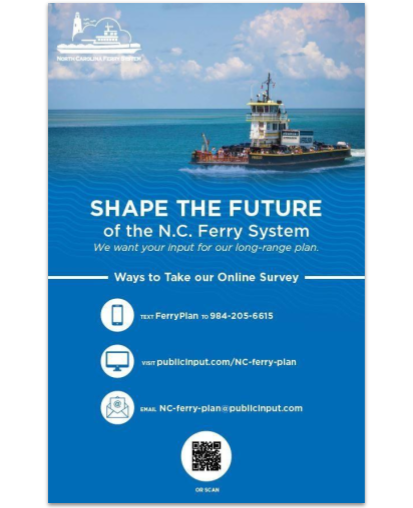
4. Capture contact data and keep it organized to grow your reach
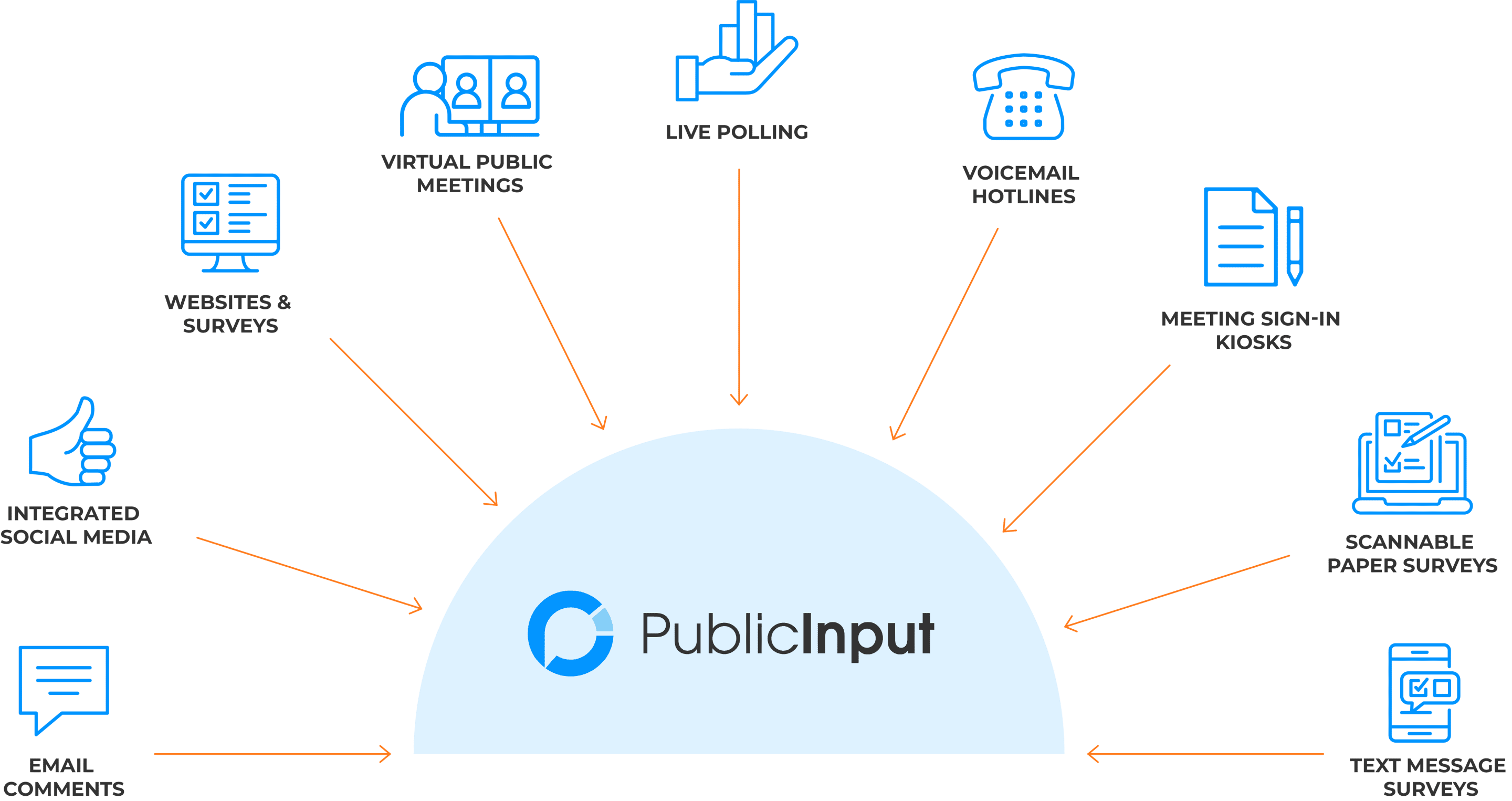
When using multiple outreach methods, it’s critical to harness contact information and public input in one place. Remember all those ways that we mentioned for reaching the public: email, text, paper collateral, public meetings, social media, etc? Don’t let that outreach go to waste by siloing in a number of different platforms.
The right public engagement software will bring data (e.g. survey responses, comments, communications) together in an all-in-one community engagement platform to be aggregated, organized, and analyzed. In addition, a CRM to hold contact information is essential in re-engaging with the public as that resident database continues to grow.
Bringing more voices to the table is the first step in a better community engagement process.
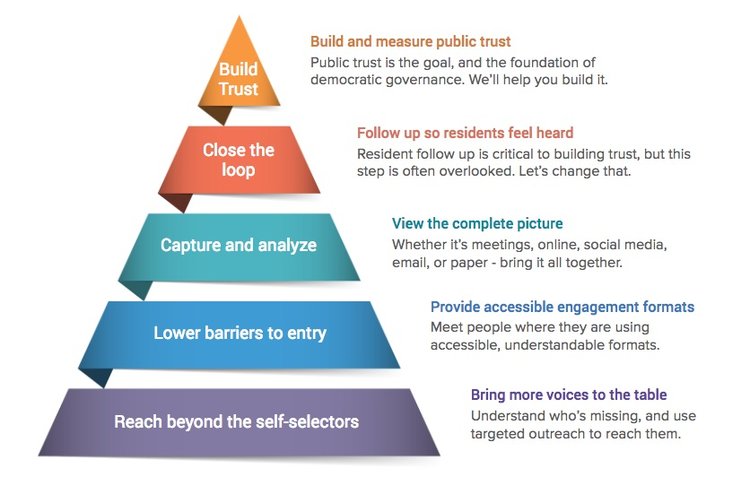
At PublicInput, we believe that building public trust starts with reaching beyond the usual voices.
Learn more about community engagement software that reaches beyond the usual voices:


